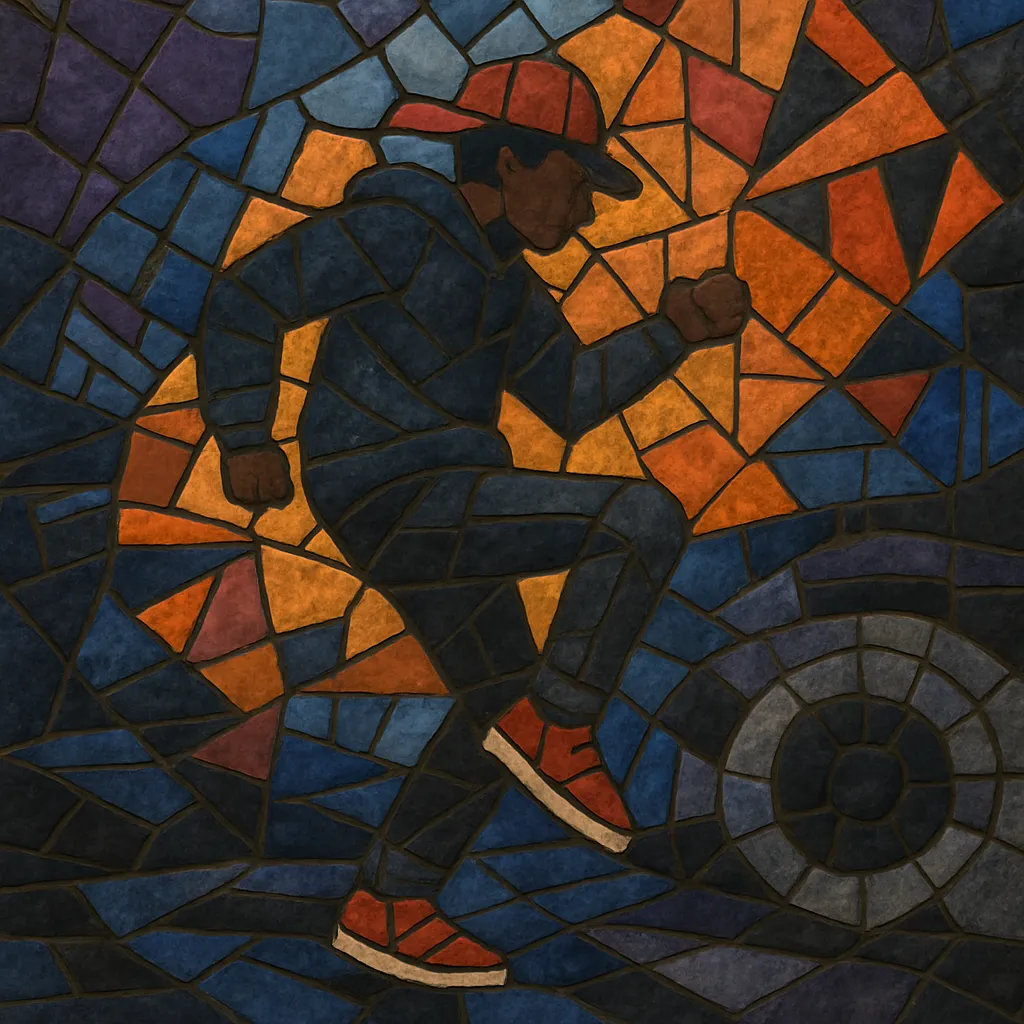
Jersey club is a high-energy, club-oriented dance music from Newark, New Jersey that evolved in the early 2000s. It is known for punchy three-kick patterns, chopped vocal stabs, stop‑and‑go drops, and a relentless, call‑and‑response party ethos.
Typically around 130 BPM, the sound blends house and breakbeat drum programming with hip‑hop sampling aesthetics. Producers often flip R&B hooks, sprinkle in signature effects (notably the "bed squeak" timbre popularized in 2000s rap), and build arrangements around short, repeatable phrases designed for coordinated dance routines.
Jersey club emerged in Newark, New Jersey, when local DJs reworked the uptempo, chopped-break aesthetic of Baltimore club into a leaner, punchier style. Early figures like DJ Tameil and DJ Tim Dolla helped codify the sound and organized around the Brick Bandits collective, shaping the genre’s trademarks: 130 BPM pacing, three‑kick accents, chopped vocals, and dramatic stop‑and‑go edits tailored for dance‑crew call‑outs.
Through teen parties, mixtapes, MySpace and YouTube, Jersey club spread across the Tri‑State area. Producers such as DJ Jayhood, DJ Lilman, and Mike Gip pushed the style with edits of R&B and pop tracks, while dancers popularized routines that matched the music’s edits and drops.
The 2010s saw a wave of international attention via SoundCloud and club labels, with artists like DJ Sliink, UNiiQU3, R3LL, and Nadus touring and collaborating with broader electronic and hip‑hop scenes. The sound’s punchy kicks, vocal chops, and dramatic breaks became familiar to EDM, trap, and bass‑music audiences.
Short-form video platforms amplified Jersey club’s dance-driven DNA. Viral songs and edits (for example, Cookiee Kawaii’s "Vibe") brought the rhythm into pop and rap. Jersey club patterns became a go-to bounce in mainstream hip‑hop and R&B—heard in high‑profile singles and in the rise of Jersey club rap and Jersey drill—cementing the style as a contemporary club lingua franca.

